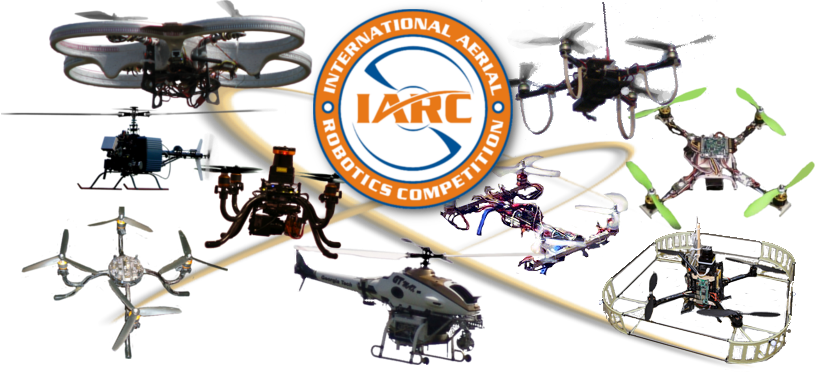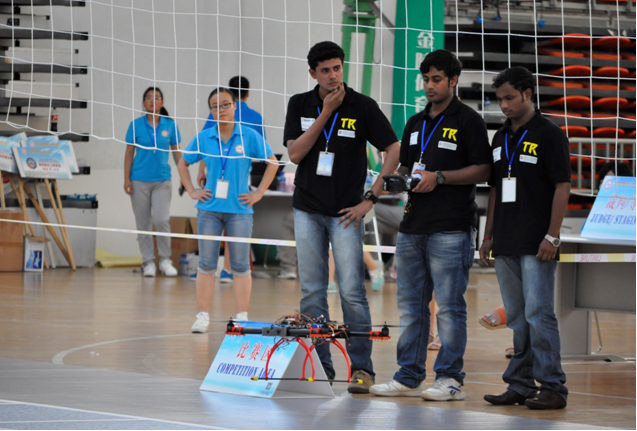Beijing’s Aerial Robotics Competition: India’s Students Win Best Sheepherder Award with 3D Printed Drone
 International competitions like the Aerial Robotics Competition, held recently in Beijing, are a perfect example of how contests among students are not only incredibly motivating and exciting, but are also a comprehensive learning tool. In a world where schools and organizations are beginning to take a softer approach to competing, that’s generally not the case in the science arena. In this realm, teams as a cumulative whole depend on incredibly sharp brains, bringing forth ideas that have the capability to surprise and impress judges–and the rest of the world.
International competitions like the Aerial Robotics Competition, held recently in Beijing, are a perfect example of how contests among students are not only incredibly motivating and exciting, but are also a comprehensive learning tool. In a world where schools and organizations are beginning to take a softer approach to competing, that’s generally not the case in the science arena. In this realm, teams as a cumulative whole depend on incredibly sharp brains, bringing forth ideas that have the capability to surprise and impress judges–and the rest of the world.
 Last November, as ten teams from around the world competed against each other at Beihang University, past experience came into play for many of the competitors, who learn more in each year’s required ‘mission.’ For the winning group, Team Recon, it was their third go around. The engineering students, traveling from India’s Hindustan University in Chennai, were awarded the Best Sheepherder Award for their 3D printed drone.
Last November, as ten teams from around the world competed against each other at Beihang University, past experience came into play for many of the competitors, who learn more in each year’s required ‘mission.’ For the winning group, Team Recon, it was their third go around. The engineering students, traveling from India’s Hindustan University in Chennai, were awarded the Best Sheepherder Award for their 3D printed drone.
We follow numerous stories about innovators around the world creating a variety of 3D printed drones, popular and often complex projects that offer fun, the ability to watch a creation actually fly, challenge at keeping them in the air, and the excitement and exhilaration of success when there’s not a crash and burn scenario at hand. These projects often (as in this case) require great knowledge about the intricate internal workings of miniature aerial craft, as well as mechanics. For Team Recon it also meant employing their knowledge of 3D printing, which they used as one of the major weapons in their arsenal for winning.
It’s common knowledge that weight often plays a big factor in how well drones and other aerial machines will perform. The team put intense focus on making their drone as lightweight as possible, turning to 3D printing for as many parts as they could. Hardly novices, this took place on a 3D printer that they actually made themselves. And using this technology allowed for the lightest weight possible in their drone, which they all see as a big part of their secret to success.
Kunal Naik, age 21, was one of the members of the team competing in Mission 7 for this year, with a theme of ‘Kill Switch with Collision Avoidance System.’ The team was given ten robots which perused the ground while they had the mission of flying their drone (solely through programming, with no remote controls) without colliding into them. This was facilitated with an internal camera that allowed the drone to monitor the robots–and avoid them.
“Our drone flew well, and the collision avoidance was better than that of the others, which is what the judges liked,” Naik told Tushar Kaushik in a recent interview with The New Indian Express “Our drone was also the lightest at 600 grams, because we used 3D printed parts from a 3D printer that three to four of us made by ourselves.”
Although this team already has great technological savvy along with experience in this type of competition and innovation, they learned plenty on their trip to China, as one would imagine.
“Compared to what I saw earlier, in the US there was advanced technology but in China there was great innovation,” said Naik. “Even the small kids were using drones. We learnt a lot from their techniques and about coding systems. We also learnt a lot about weight and power management.”
With this win, they are now enrolled in the IARC mission for 2016, to be held next August. While the students don’t know the exact theme yet, the team is already working on programming ideas at home in Chennai.
The International Aerial Robotics Competition is the longest running collegiate aerial robotics challenge in the world. Centered around ‘flying robots,’ their competitions focus on creating technology no one is capable of yet, including the government or industry. This is their third decade, and they continue to work in the area of advancing autonomous aerial robotic behavior. Discuss this story in the 3D Printed Drone forum thread on 3DPB.com.
[Source: The New Indian Express]Subscribe to Our Email Newsletter
Stay up-to-date on all the latest news from the 3D printing industry and receive information and offers from third party vendors.
You May Also Like
Precision at the Microscale: UK Researchers Advance Medical Devices with BMF’s 3D Printing Tech
University of Nottingham researchers are using Boston Micro Fabrication‘s (BMF) 3D printing technology to develop medical devices that improve compatibility with human tissue. Funded by a UK grant, this project...
3D Printing Webinar and Event Roundup: April 21, 2024
It’s another busy week of webinars and events, starting with Hannover Messe in Germany and continuing with Metalcasting Congress, Chinaplas, TechBlick’s Innovation Festival, and more. Stratasys continues its advanced training...
3D Printing Webinar and Event Roundup: March 17, 2024
It’s another busy week of webinars and events, including SALMED 2024 and AM Forum in Berlin. Stratasys continues its in-person training and is offering two webinars, ASTM is holding a...
3D Printed Micro Antenna is 15% Smaller and 6X Lighter
Horizon Microtechnologies has achieved success in creating a high-frequency D-Band horn antenna through micro 3D printing. However, this achievement did not rely solely on 3D printing; it involved a combination...






























